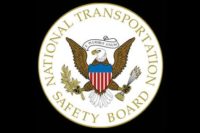The pilot’s “pattern of poor decision-making” – which was likely exacerbated by the medications he was taking for multiple health problems – led to the July 30, 2016 hot air balloon accident in Texas that killed 15 passengers and the pilot.
The balloon, which took off despite poor weather conditions, struck a power line and crashed to the ground.
Government enabled impaired pilot
“The pilot’s poor decisions were his and his alone,’’ said NTSB Chairman Robert L. Sumwalt. “But other decisions within government, dating back decades, enabled his poor decision to fly with impairing medical conditions, while using medications that should have grounded him.”
Investigators found that depression, attention deficit hyperactivity disorder and the combined effects of multiple central nervous system-impairing drugs likely affected the pilot’s ability to make safe decisions.
Weather should have forced cancellation
The investigation also found that the balloon pilot should have cancelled the sight-seeing flight because of deteriorating weather conditions and, once in the air, should not have climbed above the clouds. The pilot’s decision to then attempt to land in reduced visibility conditions diminished his ability to see and avoid obstacles and resulted in the balloon impacting power lines.
The NTSB says the Federal Aviation Administration's (FAA) medical certification exemption for commercial balloon operators is partly to blame for the tragedy, because it “eliminated the potential opportunity for an aviation medical examiner to identify the pilot’s potentially impairing medical conditions and medications. Had a medical certificate been required, the FAA would also have had an opportunity to identify the pilot’s history of drug- and alcohol-related traffic offenses.”
The NTSB is calling on the FAA to remove the exemption for commercial balloon operators.
The investigation also found fault with the FAA’s oversight of commercial balloon operators.
The board Tuesday approved two recommendations to the FAA. It called on the agency to remove the medical certificate exemption for commercial balloon operators and urged it to find ways to better provide oversight of balloon operators.
“Today’s recommendations, if acted on, will help to bring the safety standards closer to those that apply to powered flight,’’ Sumwalt said. “Balloon pilots, their passengers, and their passengers’ loved ones deserve no less.’’
The abstract of the NTSB’s final report, that includes the findings, probable cause and safety recommendations is available online at https://go.usa.gov/xnCer. The final report will be publicly released in the next several days.
The webcast of the board meeting for this investigation is available for 90 days at http://ntsb.capitolconnection.org/





